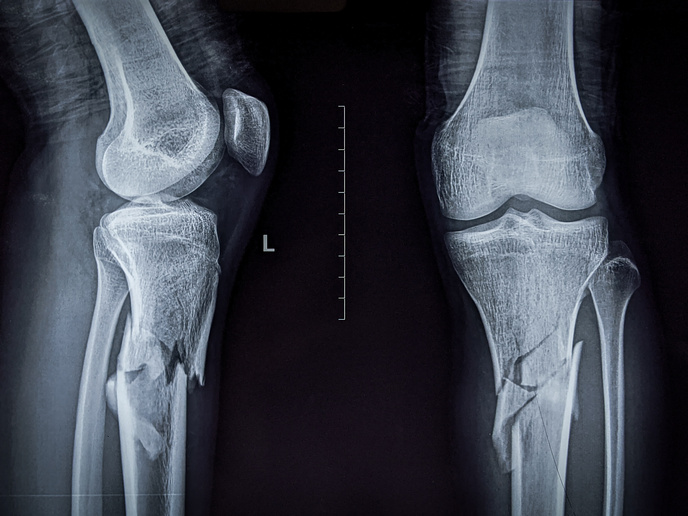Type 2 diabetes and the risk of bone fractures
Advanced age, low body weight, family history, smoking and excessive alcohol use are all well-known risk factors for developing bone fractures. One factor that may not be as well-known is type 2 diabetes(opens in new window) (T2D). “We know that type 2 diabetes is an independent risk factor for bone fractures, even in patients with normal or elevated bone mineral density,” says Ted Vaughan, a professor of Biomedical Engineering at the University of Galway(opens in new window). “What we don’t know is why this is the case.” Hoping to answer that question is the EU-funded MULT2D project. “MULT2D aims to uncover the biological and mechanical changes in bone associated with T2D and to develop models for predicting how these changes increase one’s risk for fracture,” adds Vaughan, whose research group is leading the project.
How diabetes alters bone quality
The project, which received support from the European Research Council(opens in new window), combined experimental studies in diabetic animal and human bone tissue with advanced computational modelling. “This interdisciplinary approach allowed us to identify how diabetes alters bone quality at the molecular, microstructural and tissue levels,” explains Vaughan. “It also gave us powerful insights into why patients with T2D are more susceptible to fractures and how this risk can be better assessed and mitigated.” One of those insights is the significant role that altered mineral production and delayed bone matrix maturation play in reducing bone quality. “This finding challenges conventional thinking and redirects future research and clinical strategies toward the biological mechanisms regulating bone turnover and mineralisation,” remarks Vaughan. Other key findings include the identification of non-collagenous proteins as key energy-dissipating agents in bone fracture resistance, and that T2D-related bone changes do not necessarily reduce mechanical properties.
Predicting risk of bone fractures
But MULT2D did more than deliver new insights, it also developed predictive tools to accurately assess one’s risk of bone fracture. For example, an innovative coarse-grained molecular dynamics model can be used to examine such important indicators as extra- and intra-fibrillar mineralisation. Another tool uses advanced finite element models and new algorithms to analyse trabecular bone architectures – also a key indicator for predicting the probability of fracture. “These tools are especially relevant for diabetic and ageing populations and have opened new paths for research, diagnosis and treatment,” notes Vaughan. The project’s work has been recognised by national and international bodies and received several awards, including the Engineers Ireland Medal and Best Presentation in Biomechanics at the European Orthopaedic Research Society(opens in new window) Conference. They have also been featured in publications, such as ‘Nanoscale’(opens in new window), ‘Scientific Reports’(opens in new window), and ‘Bone’(opens in new window).
Further questions about bone fragility in T2D
Although MULT2D has advanced our understanding of bone fragility in T2D, questions remain. For instance: What cellular mechanisms drive impaired bone quality, and what exactly are the altered bio-mineralisation processes observed in diabetic bone? According to Vaughan, these are complex, multifactorial challenges that will require new scientific approaches and research strategies. They’re also questions he intends to help answer. “The training of early-career researchers and the development of a sustainable, internationally recognised research group ensure that MULT2D’s impact will continue well beyond the end of the project,” concludes Vaughan. The group is pursuing follow-up funding to explore these questions in depth.





